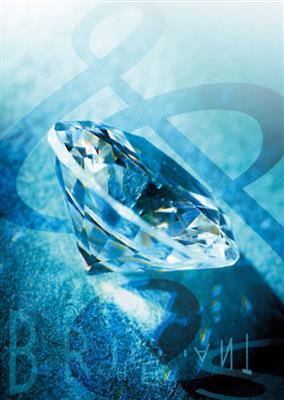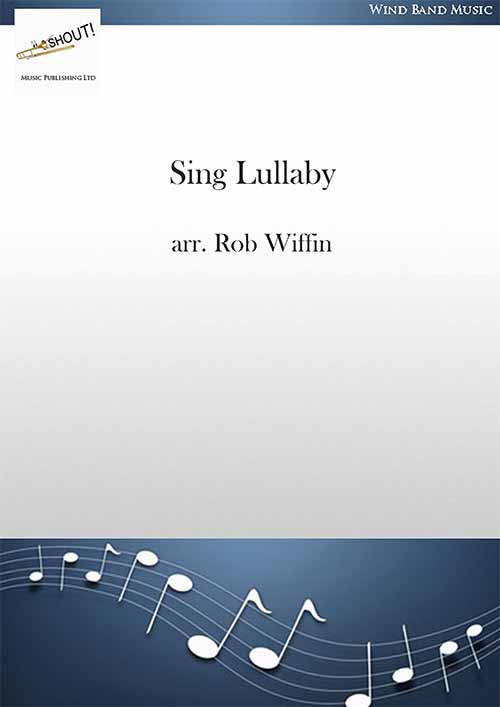Results
-
 £121.00
£121.00Altius - Lisa Galvin
"Altius" is a bold and dynamic composition to honor the legendary James Swearingen, one of the true pillars of music education. Designed for advanced bands, this challenging, yet rewarding work reflects Mr. Swearingen's profound influence on generations of musicians around the world. With soaring melodies, intricate harmonies, and a deeply expressive spirit, "Altius" offers your students an opportunity to perform a piece that not only pushes their technical abilities, but also connects them to a profound legacy of music-making. This tribute celebrates the pinnacle of musical education, inspiring both performers and audiences alike, and affirms the enduring impact of one of our nation's greatest musical treasures.This work is not yet in print. Please check back later to view the conductor score and for purchasing information. In the meantime, please enjoy this recording performed by The Washington Winds, conducted by Edward S. Petersen.
Estimated dispatch 7-14 working days
-
 £104.99
£104.99Ceremonial March - Jan Van der Roost
In the course of the two centuries following the death of Henry Purcell in 1695, no British composer of any statue was apparent. Consequently, the break-through of Edward Elgar (1857-1934) as an internationally known and respected composer at the end of the last century, was of considerable importance. As a composer Elgar was largely self-taught and he looked towards the continent for his inspiration. He is without doubt on par with his contemporaries such as the somewhat younger Richard Strauss. The Belgian composer Jan Van der Roost is a genuine admirer of Elgar's music and on the occasion of the fiftieth anniversary of the composer's death in 1984 he composed the "CeremonialMarch". Van der Roost was inspired by the most famous and frequently played works from Elgar's catalogue of works, the characteristic "Pomp and Circumstances" marches, and decided to add his own, sixth march to the existing collection.
Estimated dispatch 7-14 working days
-
 £164.99
£164.99Overture for a Special Occasion - Philip Sparke
The special occasion that Philip Sparke was honoured to write this piece for was the 200th anniversary of the Stadtmusik Bad Sckingen. Since Bad Sckingen is known as the 'Trompeterstadt', or trumpeter city, Sparke's creative process was influenced by Joseph Victor Scheffel's poem, Der Trompeter von Sckingen (The Trumpeter from Sckingen), which is based on a true story. The overture starts with a majestic fanfare, followed by a lively molto vivace. It is joined by a brilliant trumpet call in honour of the city's famous resident.
Estimated dispatch 7-14 working days
-
 £209.99
£209.99Diamond Concerto - Philip Sparke
Diamond Concerto was commissioned by Musikverein Mrschied from Germany - Dr. Eric Grandjean, conductor - for a special concert featuring Steven Mead as guest soloist. Together they gave the world premiere on 28th April 2012 in the town theatre of Idar-Oberstein.The commission is a highlight in the 30-year friendship between composer and soloist, which has included many mutual CD projects and concerts and, now, a concerto. Sparke had Steven Mead's special euphonium sound in his head throughout the composition process and made free use of the variety of styles which the world-renowned virtuoso has made his own during his highly successful solo career.The village ofMrschied lies to the west of Frankfurt am Main in the area known as the German Road of Precious Stones, which is famous for its thriving gem industry. Because of this it was decided to give the commission a local connection by choosing the title, Diamond Concerto. Each of the three movements is named after a famous diamond:1 EARTH STARis rather stern in mood, opening with a free fantasy for the soloist over a static chord from the band. This leads to an Allegro Moderato in minor mode where small motives are gradually repeated and developed by both band and soloist.2 OCEAN DREAMuses a varied quote from the composer's Music for Battle Creek, including a melting slow melody that was originally written with Steven Mead in mind.3 BLUE HEARTwas written, at Steven Mead's suggestion, in bebop style and takes the form of a jazz waltz. The quasi-improvisatory central section features a call-and-response passage for the soloist and upper woodwinds.Soloist: Difficulty 6Diamond Concerto is available for euphonium and piano (AMP 374-401) as well as for euphonium and brass band (AMP 354-030).
Estimated dispatch 7-14 working days
-
 £84.99
£84.99Consolation
Wer nur den lieben Gott lsst walten was composed by Georg Neumark in about 1641 and was subtitled 'Trostlied' literally meaning consolation song. Songbooks at the time showed the popularity of this song and it is still well-known today partly due to Johann Sebastian Bach's use of the melody for one of his own chorals. In Jan de Haan's arrangement the choral is heard twice, once, alternating with the original motif from the introduction and a second time, without interruption, reflecting the composer's original intention - a song of consolation.
Estimated dispatch 7-14 working days
-
 £219.99
£219.99At Kitty O'Shea's - Johan de Meij
For countless years the legendary Kitty O'Shea's, a bar at the Hilton & Towers Hotel in Chicago, has been the favourite meeting place for participants of the annual Midwest Band & Orchestra Clinic. It was at this bar that Johan de Meij met Max McKee, from whom he eventually received a commission to write a work based on the folk music of McKee's Irish forefathers. De Meij immersed himself in the project and received unexpected help when, while purchasing an espresso machine from a neighbour, discovered the owner was Bill Whelan, composer of Riverdance. Time for another round At Kitty O'Shea's!
Estimated dispatch 7-14 working days
-
 £154.60
£154.60Milonga Del Angel - Astor Piazzolla
This arrangement was made after hearing Astor Piazzolla's 1986 recording of his own work written in 1965.The original instrumentation of bandoneon, violin and string bass is here arranged for three wind soloists with Concert Band.The Soprano Sax is the main soloist (filling the bandoneon role), while the trombone and clarinet shares the violin part as a kind of flirting undertone to the sopranosax.It's not possible to make a 100% correct notation of the solo parts, so it's recommended to listen to the record album "Zero Hour" from 1986 to get the best impression of the work.Enjoy "Milonga Del Angel" and imagine a small, dark caf in Buenos Aires!
Estimated dispatch 7-14 working days
-
 £84.99
£84.99Fanfare prelude: O God our Help in Ages Past - James Curnow
FANFARE PRELUDE: O GOD OUR HELP IN AGES PAST is based on the hymn-tune "St. Anne," which was used by G.F.Handel in the Chandos anthem "O Praise the Lord," and by J.S.Bach in his triple fugue in E-flat "The St. Anne Fugue." James Curnow's FANFARE PRELUDE: O GOD OUR HELP IN AGES PAST captures the thoughts of this magnificent hymn, which speaks of our country's reliance upon God. The unusual 4/4 meter setting with artfully crafted re-harmonizations and lush counterpoint gives each listener cause to reflect on the importance and meaning of this melody to patriotic Americans everywhere.Inspired!
Estimated dispatch 7-14 working days
-
 £36.95
£36.95Sing Lullaby (Concert Band - Score and Parts) - Wiffin, Rob
Sing Lullaby, also known as The Infant King, is an arrangement of a Basque Carol. The words were translated into English by Sabine Baring-Gould (1834-1924) an Anglican priest and folk song collector. The melody was harmonized by the English organist and music editor Edgar Pettman (1866-1943) who included it with other Basque carols (also rendered by Sabine Baring-Gould) in The University Carol Book in 1922. I use a little of Pettman's harmony but also take a different look. I also set it in 3/4 time rather than Pettman's 6/8 (starting with an anacrusis) which allowed me more freedom of expression and a chance to use a few hemiolas in poignant moments. It is a beautiful, tender carol as befits a lullaby though not without a few suspensions which allude to the future trials of the Infant King described in Baring-Gould's words.- Rob WiffinDuration: 4.15
Estimated dispatch 7-14 working days
-
 £8.99
£8.99Disney Favorites (Concert Band Instrumental Folio Books) - Longfield & Vinson
There's no better way to motivate your band than with some popular Disney music! This collection from Essential Elements works with all ensembles, regardless of what method you're using, and features great songs your band members are sure to know. The arrangements work for the whole ensemble to play together, but also as solo works for each instrumentalist! The songs are carefully correlated to correspond with instruction in the Essential Elements method books 1 and 2 so you'll know exactly when your group is ready to take on another song. A handy chart is provided in the table of contents so you can see the progress requirements.Songs include:Beauty and the Beast (from Beauty and the Beast)Can You Feel the Love Tonight (from The Lion King)Colors of the Wind (from Pocahontas)He's a Pirate (from Pirates of the Caribbean: The Curse of the Black Pearl)Let It Go (from Frozen)Remember Me (Ernesto de la Cruz) (from Coco)Try Everything (from Zootopia)Under the Sea (from The Little Mermaid)We Don't Talk About Bruno (from Encanto)We're All in This Together (from High School Musical)Each student book includes parts for the full band arrangement as well as separate pages for solo use. The conductor's edition includes full scores of all the band arrangements and a sample solo page of each song as well as access to online full-band recordings of each song.The Value Pack includes:1 x Conductor Book with Online Audio6 x Flute1 x Oboe1 x Bassoon6 x Clarinet1 x Bass Clarinet4 x Alto Saxophone1 x Tenor Saxophone1 x Bari Saxophone6 x Trumpet2 x F Horn2 x Trombone1 x Baritone BC1 x Baritone TC1 x Tuba2 x Percussion1 x Keyboard Percussion
Estimated dispatch 7-14 working days
